There is nothing new under the sun when it comes to antivaccine myths, misinformation, and disinformation, and that applies to COVID-19 vaccines. If public health officials had paid more attention to the tactics of the antivaccine movement, including its central conspiracy theory, maybe they would have been more prepared for the onslaught of antivaccine misinformation that was unleashed as the mRNA COVID-19 vaccines were undergoing clinical trials. They didn't, and here we are, which is why, having seen it before multiple times last year, I'm faced with the return of the revenge of the antivaccine lie. I saw this zombie lie again on Saturday in the form of an article on Substack, where the cranks who have been banned from social media have been. These products are perfect bioweapons, either by design or accident. Who cares? The outcome is the same.
I guess, once more unto the breach. I think I should link to the two studies that were published last week to support Rose's nonsensical claims that the Moderna vaccine is slam dunk proof. Rose did not cite a study from Lund University in Sweden about the reverse transcription of the Pfizer/BioNTech vaccine into human cells.
The idea that vaccines can alter your genes is not new, but the nature of the vaccines makes that claim easier to make. If you really look at it, the claim that vaccines change your genes actually dates back to before scientists even understood the basis of heredity, as illustrated by the famous Cow-Pock cartoon.
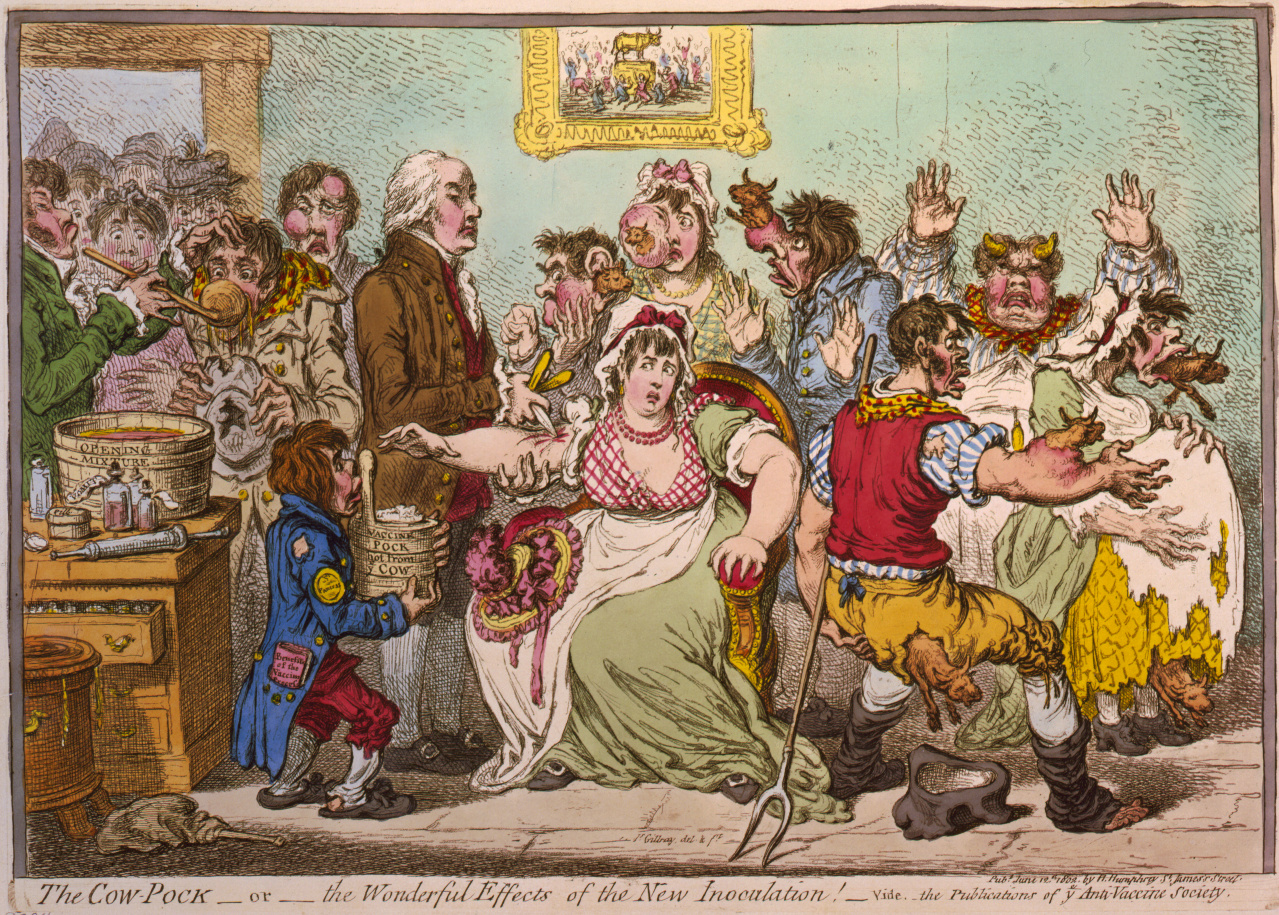
The idea that vaccines permanently alter humans had begun after Edward Jenner introduced the smallpox vaccine. The Library of Congress has a Prints and Photographs Division.
A year or so ago there was a meme about the vaccine, but this 220 year old cartoon is much more of a piece with it.
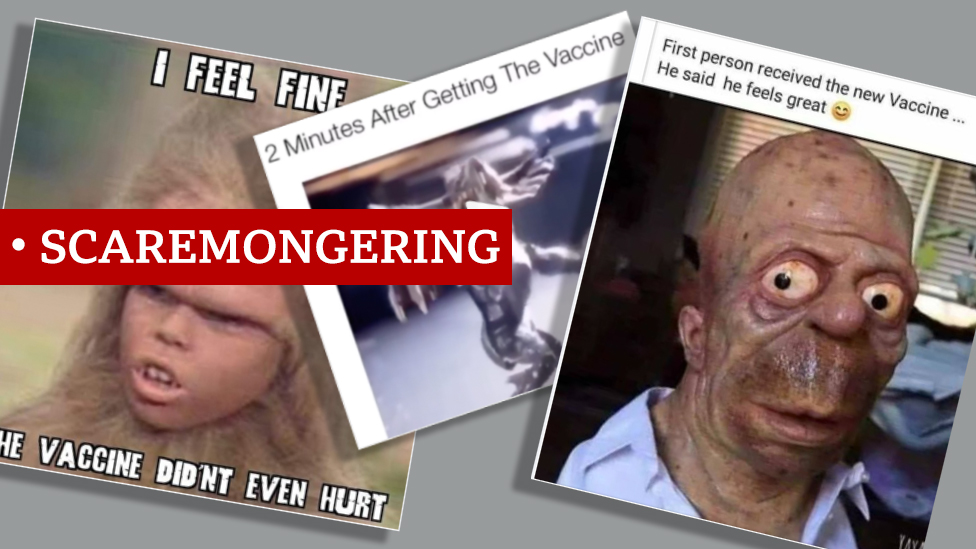
How is this different from the 19th century antivax cartoons?
The idea that an engineered virus, whether intentionally released or accidentally leaked from a laboratory, caused the epidemic is the same conspiracy theory that arises during every epidemic. Antivaxers can always find a special case that seems to show that the impossible is actually possible, and Jessica Rose is just continuing in this antivax tradition.
Before I discuss the two studies and the claims being made about them, I would like to take a look at some basic biology and molecular biology, so that you understand why her claims are so far off the mark. I realize that I've done this before, but it's been a while since I did it, so I'll include a brief explanation of something out of Biology 101. You can skip to the next section if you know all of this. Let's proceed if not.
The central dogma of molecular biology is the basis of the vaccines. I have always hated the use of the word "dogma" associated with science, but no less a luminary than Francis Crick first stated it. The most succinct version of the central dogma was stated by Marshall Nirenberg in 1959 and has since been used as a synonym for all of molecular biology in five words. The past tense was used in a moment. This is the main sequence that you need to understand in order to understand the basics of the vaccine.
It is true that a double-stranded molecule that is very stable is the result of a replica of a DNA template. The template is unwound by the enzymes that use it to make the single-stranded RNA. A ribosome uses that RNA when it is used to code for a protein. To put it simply, each letter of the code is equal to one letter of the three-nucleotide sequence. There are 64 possible codons. The genetic code is redundant since there are only 20 amino acids. It's more complicated than that, as these diagrams show, and it's the same with nearly everything in biology.
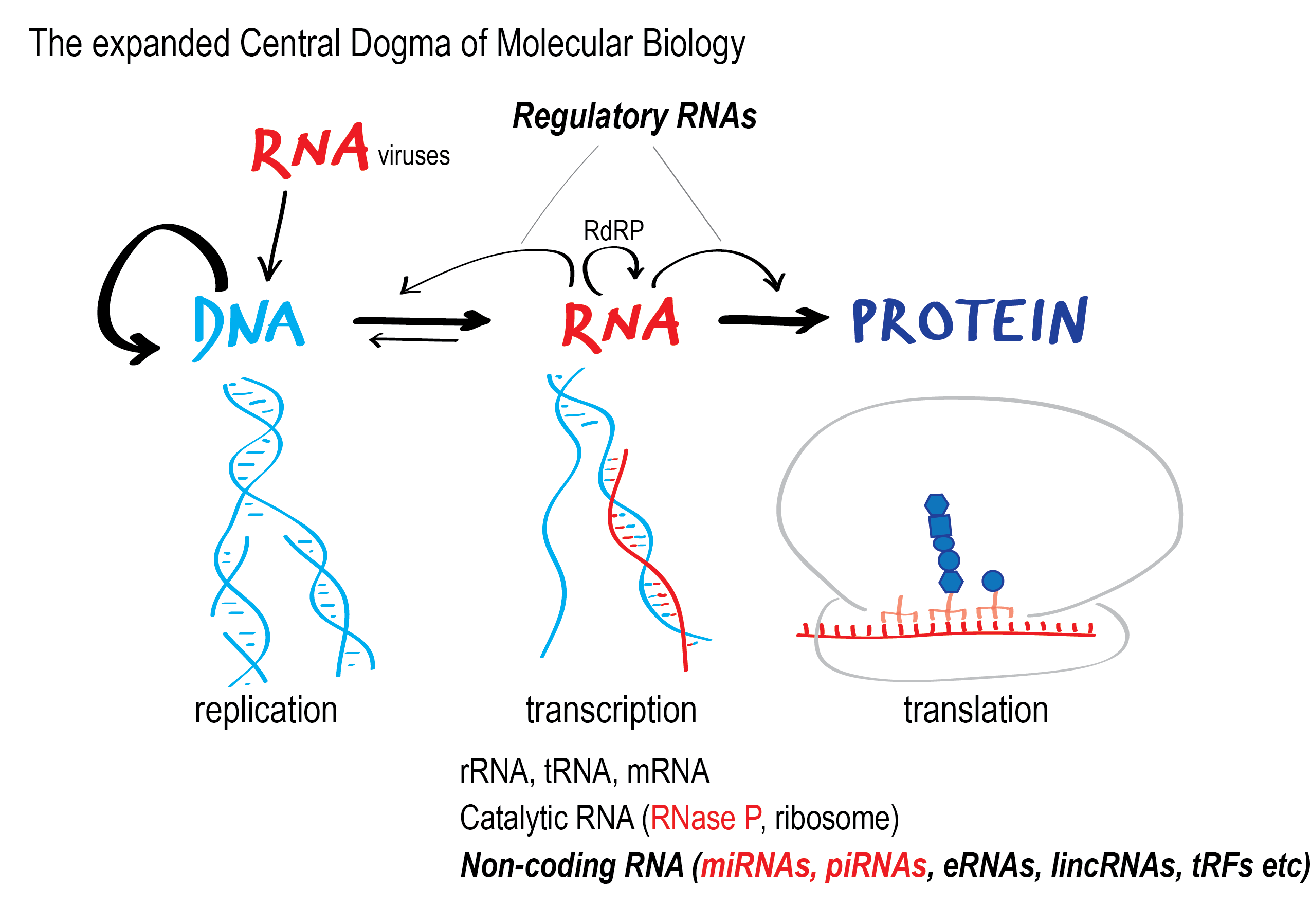
The central dogma ofmolecular biology is the flow of information from DNA toRNA.
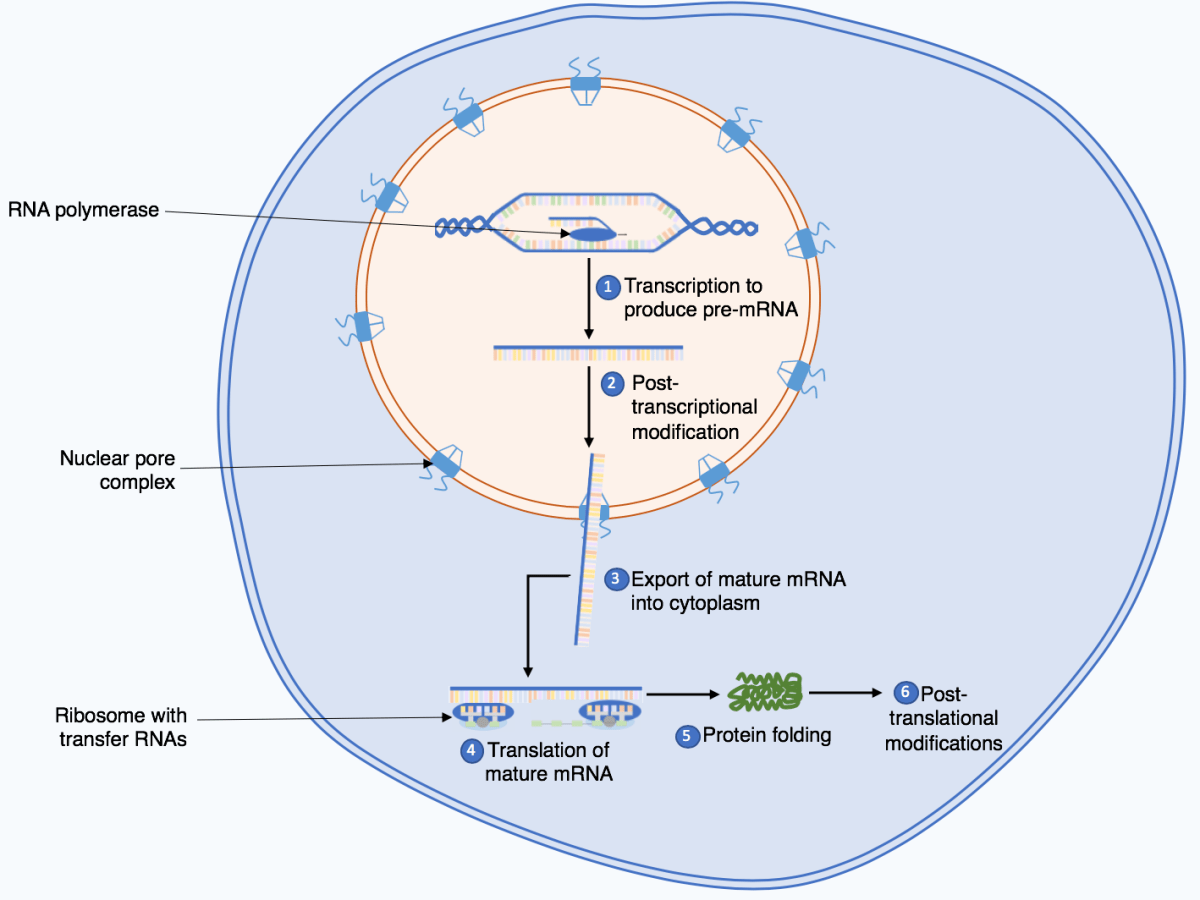
Information from the nucleus to the nucleus to the nucleus to the nucleus to the nucleus to the nucleus to the nucleus to the nucleus to the nucleus to the nucleus to the nucleus to the nucleus to the nucleus to the nucleus to the nucleus to the nucleus to the nucleus to the nucleus to the nucleus
There are more problems, of course. It is often made as a longer precursor molecule, parts of which are cut out by the enzymes, to produce the final sequence of the messenger RNA molecule. There are exceptions to the central dogma, such as retroviruses and microRNAs. You don't need to know the gory details of these processes, except for retroviruses, who can reverse the flow of information. HIV is the most well-known retroviruses because of its ability to cause AIDS.
Most of the vaccines consist ofRNA. There is a problem with the vaccine that isRNA. It is a messenger. The message needs to be made and it doesn't need to persist any longer. In the solution, the molecule degrades quickly. Public health experts have been concerned about the distribution of RNA vaccines. Moderna and Pfizer used the same strategy in designing their mRNA to make it easier for the immune system to recognize it. Pfizer and Moderna used modified nucleosides that are more stable to make theirRNAs, and placed them within a delivery system in which LNPs are fused with the cell to deliver theRNA.
The Pfizer/BioNTech and Moderna vaccines rely on a very simple mechanism in which the LNPs deliver the mRNA to muscle cells, which then use it as a template to make a spike. Some of the vaccine can get to the regional lymph nodes, where it can cause an immune reaction. This is part of the reason why mammography recommendations have changed to include waiting at least six weeks after receiving an injection of COVID-19 because it has been found to cause false positives in mammography done too soon after vaccination.
The same thing as a retroviruses and the same thing as an RNA virus is not the same. Unlike most RNA-based viruses, retroviruses use an enzyme called reverse transcriptase to make a DNA copy of their genetic information. Antivaxxers have to look very hard for highly unusual, artificial, or special case experiments in order to produce a fear mongering narrative. Guess what? Rose found them.
Let's see what Jessica Rose wrote about these studies. Her message is very similar to that of antivaxxers 220 years ago.
I started to write this article yesterday but not one, but two papers of great interest to me have been published recently and require dissection and dissemination. They are entitled: “MSH3 Homology and Potential Recombination Link to SARS-CoV-2 Furin Cleavage Site” and “Intracellular Reverse Transcription of Pfizer BioNTech COVID-19 mRNA Vaccine BNT162b2 In Vitro in Human Liver Cell Line”, respectively.
Let me be clear here: These COVID-19 injectable products are perfect bioweapons – either by design or accident. Who cares which. The outcome is the same.
Rose writes about the first paper.
Background for future: MSH3 (MutS Homolog 3) is gene that encodes a protein that is responsible for maintaining the stability of our genomes and suppressing tumor formation. This protein is DNA mismatch repair (MMR) protein which means that it recognizes and repairs bad base (nucleotide) insertions, deletions and mis-incorporations that come about inherently as part of DNA recombination and replication as well as DNA repair. You might have heard me talk about this in some of my presentations in reference to the recently-published paper describing 2 enzymes characterized to be inhibited by the spike protein.
…we found that the spike protein localizes in the nucleus and inhibits DNA damage repair by impeding key DNA repair protein BRCA1 and 53BP1 recruitment to the damage site.
This more recent paper shows the presence of a 19 nucleotide-long sequence (19mer) that in fact, contains the sequence that encodes the furin-cleavage site of the SARS-nCoV-2 spike protein. In other fact, this 19mer has 100% sequence identity (100% query cover and matched identity anti-parallel complementarity 5’-3’) with patented sequences from as early as 2015. (I am checking on the link to MSH3.)1
Aha! There is a conspiracy theory. More on that later. This is not the first time that I have seen the claim that COVID-19 vaccines interfere with DNA repair. Last time, it was claimed that the vaccine interfered with a process known as non-homologous end joining and made people more susceptible to cancer. That claim was false. The study was very poor quality and had no biological relevance to human cancer risk, but it did contribute to the fascist antivax claim that vaccines somehow make the blood unvaccinated.
Rose is off base for the second study.
Perhaps even more disturbing from a biological point of view, is something that many of us have hypothesized to be possible, has now been proven to be the case. Another new paper (link above) confirms that the Pfizer mRNA incorporates into human DNA. IN AS LITTLE AS 6 HOURS.
We detected high levels of BNT162b2 in Huh7 cells and changes in gene expression of long interspersed nuclear element-1 (LINE-1), which is an endogenous reverse transcriptase.
Huh is correct.
If you give Huh cells love, they will grow and grow. They are good for using in assays that involve viral propagation. LINE-1 is a reverse transcriptase that makes up 17%) of our genome. The LINE-1 retrotransposons are active during embryogenesis.
This claim is based on an experiment that has been done a number of times before to try to prove that theRNA virus can mimic a retroviruses. I will discuss this study first.
For the vast majority of cases in normal cellular biology, information does not flow backwards from the central dogma of molecular biology. One of the exceptions is HIV and retroviruses, which requires two different enzymes. The reverse transcriptase destroys the RNA template in the process. The reverse transcriptase does not integrate the strands of DNA that are produced into the human genome. There is a secondidase needed. After the double-stranded DNA is inserted into the host's chromosomal DNA, you can view it as a point of no return.
Jessica Rose said that reverse transcriptase is not the only source. Under normal circumstances, mammalian cells have very low levels of reverse transcriptase activity. telomerase adds sequence known as telomere repeat to the ends of chromosomes using an RNA template to prevent the shortening of the chromosomes. The unlimited replicative potential of cancer is associated with excessive telomerase activity. The focus of the paper is LINE-1, mentioned by Rose.
Nuclear elements are referred to as LINEs. They are also known as class 1 transposable elements or transposons. Retrotranposons can copy and paste themselves into different locations in the genome by making RNA and converting that into DNA through reverse transcription. Because it's simple, I'll use an illustration of how they work from Wikipedia.
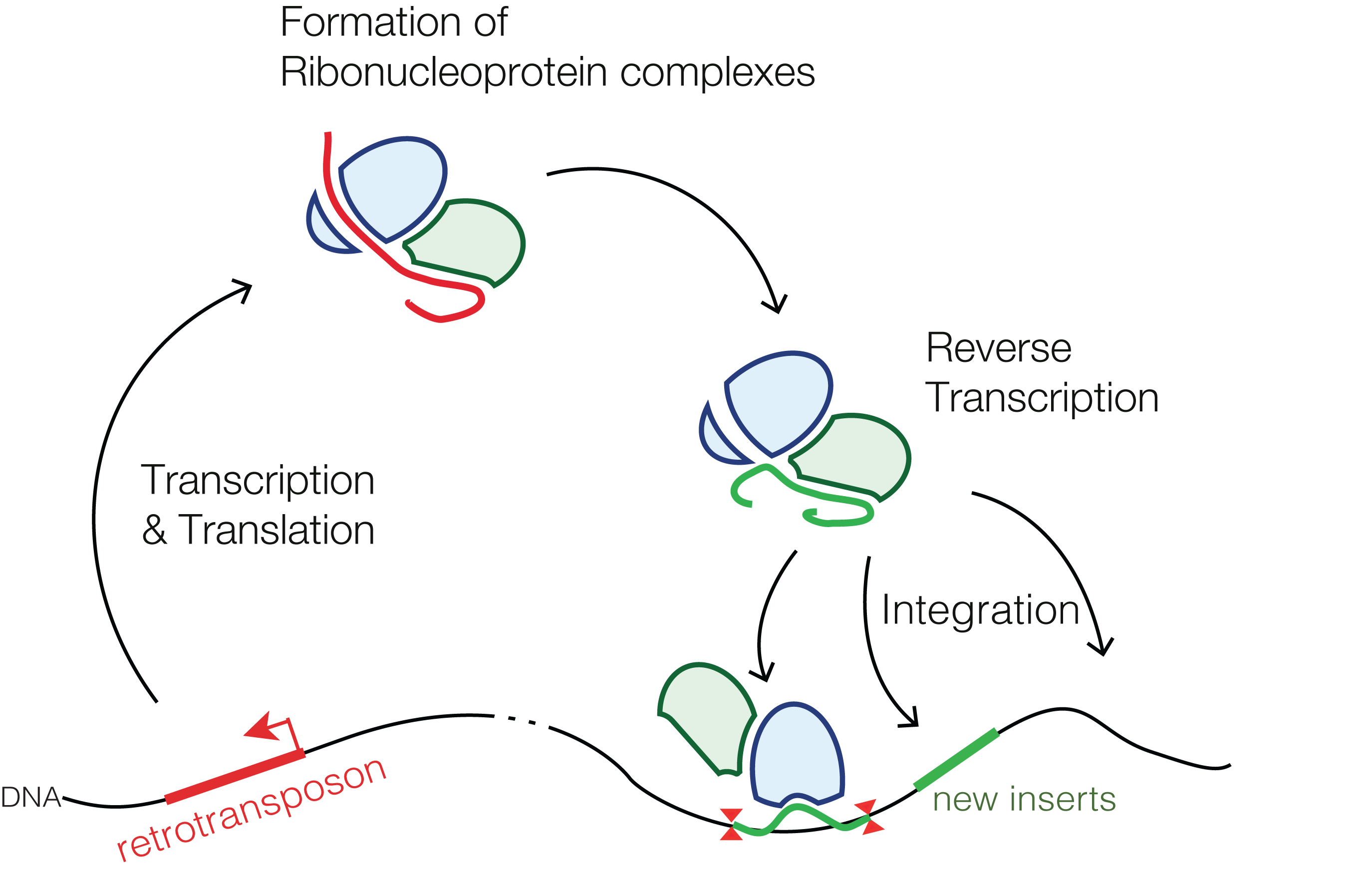
The retrotransposons copy and paste themselves into different locations.
You would be correct to be wondering what LINE-1 could have to do with genetic sequences from the vaccine getting into the human genome, permanently altering your DNA. The process requires retrotransposons to be able to replicate themselves and then paste the new copies elsewhere in the genome. Rose points out that LINE-1 makes up approximately 17% of the human genome. Increased LINE-1 is associated with a number of diseases, but it is very little active in normal physiology. I almost didn't say that because it gave antivaxxers ideas.
The second study is cited by Rose. What did the investigators do? Let's look at the investigators' rationale.
A recent study showed that SARS-CoV-2 RNAs can be reverse-transcribed and integrated into the genome of human cells [25]. This gives rise to the question of if this may also occur with BNT162b2, which encodes partial SARS-CoV-2 RNA. In pharmacokinetics data provided by Pfizer to European Medicines Agency (EMA), BNT162b2 biodistribution was studied in mice and rats by intra-muscular injection with radiolabeled LNP and luciferase modRNA. Radioactivity was detected in most tissues from the first time point (0.25 h), and results showed that the injection site and the liver were the major sites of distribution, with maximum concentrations observed at 8–48 h post-dose [26]. Furthermore, in animals that received the BNT162b2 injection, reversible hepatic effects were observed, including enlarged liver, vacuolation, increased gamma glutamyl transferase (γGT) levels, and increased levels of aspartate transaminase (AST) and alkaline phosphatase (ALP) [26]. Transient hepatic effects induced by LNP delivery systems have been reported previously [27,28,29,30], nevertheless, it has also been shown that the empty LNP without modRNA alone does not introduce any significant liver injury [27]. Therefore, in this study, we aim to examine the effect of BNT162b2 on a human liver cell line in vitro and investigate if BNT162b2 can be reverse transcribed into DNA through endogenous mechanisms.
This is a thin gruel. The study that I mentioned before involved the injection of a large amount of LNPs with a different mRNA than the vaccine and was designed to make determination of the biodistribution of the L.
It's not a new claim that the cell that carries the disease is reverse transcribed to integrate with the host genome. Antivaxxers used to claim that the vaccine could do the same thing if it was based on the ability of SARS-CoV-2 to reverse transcribe. This study was harshly criticized as not reproducible, very rare, and almost certainly artifacts of the experimental conditions used, given that appropriate controls weren't used. The publication of the study in PNAS notwithstanding, Ed Nirenberg says that the study is not reverse-transcribed to any significant extent.
I get the same feeling from this study. What did the authors do? They took Huh7 cells and exposed them to the Pfizer/BioNTech vaccine at 200,000 cells/well. Then they did this.
BNT162b2 suspension was then added in cell culture media to reach final concentrations of 0.5, 1.0, or 2.0 μg/mL. Huh7 cells were incubated with or without BNT162b2 for 6, 24, and 48 h. Cells were washed thoroughly with PBS and harvested by trypsinization and stored in −80 °C until further use.
The cells were taken after 48 hours. In other experiments the cells' genomic DNA was taken from them. The segment of the nucleic acid that was amplified was important.
The amplicon is the part of the sequence amplified.
Why did they only amplify this segment of the gene? The longer the segment that is amplified is, the less efficient it is for quantitative real time. The only thing that can be said is that perhaps this segment of spike was reverse transcribed. A high concentration of vaccine was used for only 200,000 cells. That in and of itself is very artificial. Huh7 was derived from a cancer. The Huh7 genome is messed up like many cancer-derived cell lines.
He notes that cancer cells have a lot more of L-1 expression than normal cells.
The investigators used a cell line with a high level of LINE-1 to stack the deck. If I were a peer reviewer, I would want the investigators to use a more normal cell line. Some cell lines have less messed up genomes than others. There are a number of respiratory cell lines that could work, or what about simple primary cultures of HUVECs? They only used one cell line. If you see a paper that only uses one cell line, be very, very skeptical, not just for COVID-19 but for any basic science studies.
Back to the paper. What did the authors find? They found that the vaccine drove spike mRNA expression, leading to high levels in the cells, while not having much effect on LINE-1 expression. It doesn't make sense that the lower vaccine concentrations would depress LINE-1 expression but lead to increased expression only at the 6 hour time point.
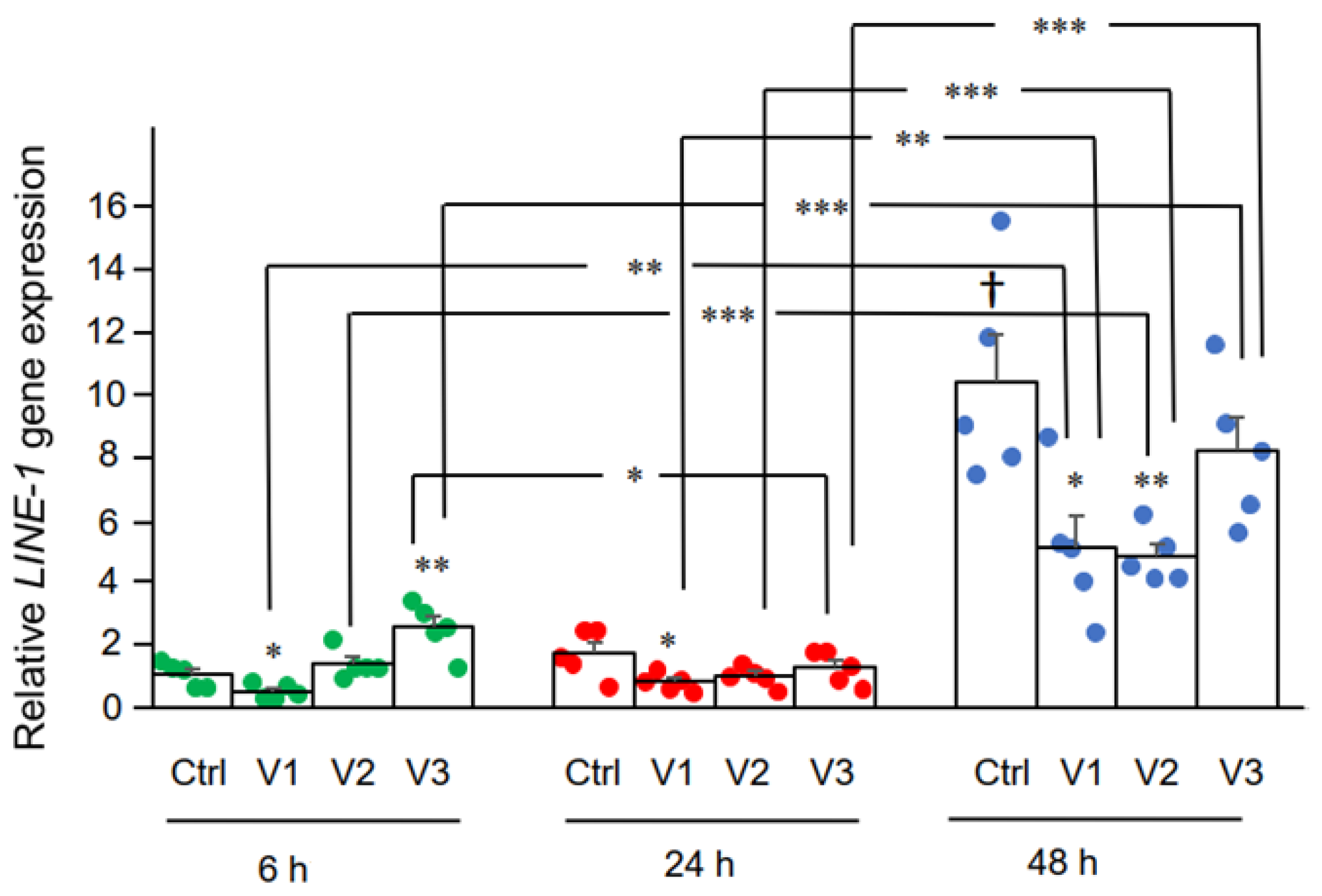
If you see a graph like this, get rid of your BS detector.
The same chart is included in Rose's article, but she doesn't see its shortcoming. Amusingly, the authors used two-tailed Student's t-tests to compare these differences, which is not the correct statistical test for multiple time- dependent comparisons, and the finding of this result is most consistent with noise. I would have called out the statistics used if I had been a peer reviewer.
But what about reverse-transcribed DNA? The authors found that in the genomic DNA from the cells. They found that the amplified segment was the same spike sequence targeted by the primers. Scientists, checkmate! The authors add some weasel words.
In this study we present evidence that COVID-19 mRNA vaccine BNT162b2 is able to enter the human liver cell line Huh7 in vitro. BNT162b2 mRNA is reverse transcribed intracellularly into DNA as fast as 6 h after BNT162b2 exposure. A possible mechanism for reverse transcription is through endogenous reverse transcriptase LINE-1, and the nucleus protein distribution of LINE-1 is elevated by BNT162b2.
The study did not show that this reverse transcription had anything to do with LINE-1, leaving the authors to speculate. They could have shown that LINE-1 was responsible by showing that cells that don't make it were knocked out and that the reverse transcription of spike was blocked. They didn't do that. Antivaxxers ignore the speculation because they think it's a fact that the reverse transcript is done through LINE-1.
Next:
Our study shows that BNT162b2 can be reverse transcribed to DNA in liver cell line Huh7, and this may give rise to the concern if BNT162b2-derived DNA may be integrated into the host genome and affect the integrity of genomic DNA, which may potentially mediate genotoxic side effects. At this stage, we do not know if DNA reverse transcribed from BNT162b2 is integrated into the cell genome. Further studies are needed to demonstrate the effect of BNT162b2 on genomic integrity, including whole genome sequencing of cells exposed to BNT162b2, as well as tissues from human subjects who received BNT162b2 vaccination.
This led to a lot of handwaving.
The cell model that we used in this study is a carcinoma cell line, with active DNA replication which differs from non-dividing somatic cells. It has also been shown that Huh7 cells display significant different gene and protein expression including upregulated proteins involved in RNA metabolism [56]. However, cell proliferation is also active in several human tissues such as the bone marrow or basal layers of epithelia as well as during embryogenesis, and it is therefore necessary to examine the effect of BNT162b2 on genomic integrity under such conditions. Furthermore, effective retrotransposition of LINE-1 has also been reported in non-dividing and terminally differentiated cells, such as human neurons [57,58].
Yes, but no, this is just handwaving.
Why didn't they bother to do the follow up experiments to see if this sequence is integrated into the genome? Why didn't they do the whole spike sequence to show that the full length sequence had been reversed-transcribed? Is it possible to do the same thing with different fragments from the spike sequence? It confuses the mind.
Rose will go straight off the end of the plank of science to this conclusion.
LINE-1 retrotransposons are also involved during early embryonic development. Since LINE-1 expression levels are significantly increased then what effect is this over-expression having on embryogenesis?
We found that too much or too little LINE-1 expression caused development to come to a halt. This means that the precise timing and level of retrotransposon expression is critical for the development of the embryo.”
I need to go for a walk. The article will be changed.
I can't wait for Rose's update, given how far she had to travel to find a reason to do a highly artificial experiment. I think that her updates will be as funny as her original post.
What about the first study?
The second paper cited by Rose was all about conspiracy theories. It's not about the more plausible variant of the lab leak concept, which is still highly unlikely compared to a natural origin, because a naturally occurring bat coronaviruses somehow escaped the virology lab at Wuhan. The finding of a short DNA sequence from a larger sequence patented by Moderna years ago as part of its cancer research effort is slam-dunk evidence, which is a different twist on the same idea. Let's say that it's not.
The peer-reviewed scientific equivalent of an op-ed article is the perspective article. I can't help but wonder how the authors got something like this published on the basis of doing some BLAST searches of the Genbank database, something anyone with an Internet connection can do to see if any of the ones reported to the database exist. I used to do BLAST searches all the time, and have done a few going back to the beginning of the epidemic, when James Lyons-Weiler tried to prove that there was a common plasmid.
The op-ed makes a point.
A peculiar feature of the nucleotide sequence encoding the PRRA furin cleavage site in the SARS-CoV-2 S protein is its two consecutive CGG codons. This arginine codon is rare in coronaviruses: relative synonymous codon usage (RSCU) of CGG in pangolin CoV is 0, in bat CoV 0.08, in SARS-CoV 0.19, in MERS-CoV 0.25, and in SARS-CoV-2 0.299 (9).
A BLAST search for the 12-nucleotide insertion led us to a 100% reverse match in a proprietary sequence (SEQ ID11652, nt 2751-2733) found in the US patent 9,587,003 filed on Feb. 4, 2016 (10) (Figure 1). Examination of SEQ ID11652 revealed that the match extends beyond the 12-nucleotide insertion to a 19-nucleotide sequence: 5′-CTACGTGCCCGCCGAGGAG-3′ (nt 2733-2751 of SEQ ID11652), such that the resulting mRNA would have 3′- GAUGCACGGGCGGCUCCUC-5′, or equivalently 5′- CU CCU CGG CGG GCA CGU AG-3′ (nucleotides 23547-23565 in the SARS-CoV-2 genome, in which the four bold codons yield PRRA, amino acids 681–684 of its spike protein). This is very rare in the NCBI BLAST database.
The correlation between this SARS-CoV-2 sequence and the reverse complement of a proprietary mRNA sequence is of uncertain origin. Conventional biostatistical analysis indicates that the probability of this sequence randomly being present in a 30,000-nucleotide viral genome is 3.21 ×10−11 (Figure 2).
Wow. That sounds damning, isn't it?
The reference to the furin cleavage site will be immediately recognized by those following various theories about the origin of SARs-CoV-2. The two functional subunits of the SARS-CoV-2 spike are located between the S1 and S2 and are caused by a human protein called furin. The claim that the two successive CGG codons are rare codon usage is true. This is a hoary old bit of conspiracy mongering dating back to the early days of the Pandemic and popularized by science writer turned COVID-19 conspiracy theorist Nicholas Wade. The term randomly present in a 30 kb viral genome is doing a lot of heavy lifting because no one is saying that it is random. Do the authors think that the coronaviruses are made up of random sequence unrelated to each other? Absolutely not! They are highly related.
It has been pointed out that the probability argument is off base.
Lawrence Young, Ph.D., a virologist at the University of Warwick, said it was interesting but probably not significant enough to suggest the virus was manipulated in a laboratory. “We’re talking about a very, very, very small piece made up of 19 nucleotides. So it doesn’t mean very much to be frank, if you do these types of searches you can always find matches. Sometimes these things happen fortuitously, sometimes it’s the result of convergent evolution (when organisms evolve independently to have similar traits to adapt to their environment). It’s a quirky observation but I wouldn’t call it a smoking gun because it’s too small. It doesn’t get us any further with the debate about whether COVID was engineered.”
Simon Clarke, Ph.D., a microbiologist at Reading University, also questioned the one-in-three trillion statistics, saying, “There can only be a certain number of [genetic combinations within] furin cleavage sites. They function like a lock and key in the cell, and the two only fit together in a limited number of combinations. So it’s an interesting coincidence but this is surely entirely coincidental.”
If you are a conspiracy theorist, there is no such thing as a coincidence if it is about something you want to believe to be true. This is correct. The wrong argument to make is how common a 19 nucleotide sequence would be in a viral genome. It's more likely that it happened by chance because of the function and how short the sequence is.
I have discussed before that a CGGCGG sequence is not uncommon. It has been found in other coronaviruses. A number of coronaviruses have furin cleavage sites, as discussed in this recent review article. coronaviruses have furin cleavage sites that are not so uncommon as to be strong evidence of laboratory manipulation. There are known natural mechanisms by which a sequence could have arisen. What about that 19-nucleotide sequence?
The claim made in this op-ed is an interesting spin on the old claims about the furin cleavage site, that I haven't seen before. The authors claim that the same 19 nucleotide sequence found in MSH3 is the same sequence patented by Moderna seven years ago and used in the Moderna vaccine.
The proprietary sequence SEQ ID11652, read in the forward direction, encodes a 100% amino acid match to the human mut S homolog 3 (MSH3) (9). MSH3 is a DNA mismatch repair protein (part of the MutS beta complex) (11). SEQ ID11652 is transcribed to a MSH3 mRNA that appears to be codon optimized for humans (12). We did not find the 19-nucleotide sequence CTCCTCGGCGGGCACGTAG in any eukaryotic or viral genomes except SARS-CoV-2 with 100% coverage and identity in the BLAST database (Supplementary Tables 1–3).
The authors make explicit a claim.
The absence of CTCCTCGGCGGGCACGTAG from any eukaryotic or viral genome in the BLAST database makes recombination in an intermediate host an unlikely explanation for its presence in SARS-CoV-2.
The Moderna patent and checkmate must have been added to this sequence. Not much. The reverse complement of the sequence found on the furin cleavage site is found in this sequence. What does that mean? The strand that doesn't code for protein is on the opposite strand. The authors try to explain this by saying that the cells can attach to this 19-nucleotide sequence and allow integration of a fragment from the negative strand. This comes across to me as an attempt to wave away the substantive criticism that a sequence that isn't the strand that codes for the actual proteins is not a sequence at all.
I did some BLAST searches of my own, and after doing a number of them, I concluded that this result was not easy to come by. I had to search the sequence patented by Moderna versus the one patented by SARS-CoV-2 with parameters that allowed for the least degree of similarity, otherwise there were zero matches. The investigators searched the sequence for the reverse complement and came up with a short 19 acid match, even though it was the reverse complement that was patented by Moderna.
Rose's observations make me sure that this is random.
Most disturbing, however, is that HZ246785.1 was patented 7 years ago by MODERNA THERAPEUTICS (2015) and more recently by ModernaTX Inc (2017/2018). Other patents for this same 19mer were filed by CAMBIA (2015) and CureVac AG (2021). A shorter version with 89% query and 100% matched identity were found in patents filed by Monsanto Technology LLC (2016) and Metanomics GmbH (2015). Just noting some familiar names here. Not making any claims.
The bioinformatician gave a lengthy explanation for why there is nothing to see here.
First of all, the nucleotide sequence is really there. It is located in sequence 11652 from patent US 9587003, position 2733-2751 (revers strand). The Genbank ID is KH664781. 2/https://t.co/JKr4MtO5ip
— Moreno Colaiacovo
(@emmecola) December 8, 2021
Sequence 11652 is annotated as "artificial", however if we analyze it using blastx, we find an almost perfect full-length match with NP_002430.3 (MSH3), which is a human protein involved in DNA repair. Clearly it makes sense, since the patent deals with cancer therapy. 4/ pic.twitter.com/xAXh4zdZ21
— Moreno Colaiacovo
(@emmecola) December 8, 2021
In conclusion, despite the name "Moderna", this sequence has nothing to do with furin cleavage sites, vaccines or coronaviruses. It is just an RNA molecule encoding for a human protein that, by chance, has a short stretch of nucleotides identical to SARS-CoV-2.
— Moreno Colaiacovo
(@emmecola) December 8, 2021
Colaiacovo noted when challenged.
But that's the point.. You find that sequence in many other species, and you also find it in a Moderna patent. It's quite a short sequence and you find it in several places. I concur that it's a striking coincidence, but it's a weak evidence for claiming a link between the two..
— Moreno Colaiacovo
(@emmecola) February 23, 2022
And:
The 19-nt is identical only in the Moderna patent. In the human MSH3, only 13 nt are identical. Outside that segment (20 nt upstream and downstream), there is basically no similarity in both versions of the MSH3 transcript.
— Moreno Colaiacovo
(@emmecola) February 26, 2022
Think of it this way. Someone did a lot of work to find this 19 nucleotide. This is the best they could come up with, because they have to do serious contortions to make such a short stretch seem sinister. It is not likely that this shared 19-mer is proof of some sort of engineering or that Moderna is talking about a disease in 2016 Think about how unlikely the scenario would be, if cells transfected with the sequence in the patent were exposed to a virus like the one that led to SARS-CoV-2. This is reaching the level of implausibility.
In the age of COVID-19, everything old is new again. Everything old that was new again when COVID-19 struck is becoming old as the Pandemic grinds on. The idea that COVID-19 vaccines permanently alter your DNA has spawned a number of variations, if you will excuse my use of the term. The version of the lab leak hypothesis that asserts that one of the manufacturers is responsible for the outbreak of the disease has been added to the conspiracy theory. Jessica Rose aided and abetted the publication of the awful studies in the journals that helped to spread the conspiracy theories.